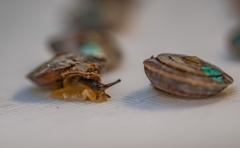The lead researcher, Haochen Huang, expressed the intent behind the name, linking it to San's portrayal as a fierce protector of nature: “In Princess Mononoke, San sees herself as a part of the forest and fights to protect it.” The film, which resonates with themes of environmental harmony, serves as a poignant reminder of the intertwined fates of humanity and nature. Although deepwater tilefish, part of the Branchiostegidae family, are commonly found in seafood markets across Asia, new discoveries within this group are rare, with only a handful of species identified in recent decades. The preservation of samples for further study could open new avenues for understanding this fascinating marine life and its ecological significance.
Moreover, this discovery shines a light on the pressing need for preserving marine ecosystems in the face of ongoing environmental challenges. As the world grapples with climate change and biodiversity loss, this new species stands as a symbol of hope and a call for greater conservation efforts.
This incredible find emphasizes the importance of marine research and the connections that exist between our cultural narratives and the natural world around us, encouraging a dialogue focused on sustainability and environmental stewardship.
Marine biology, Conservation, Environmental Awareness
Moreover, this discovery shines a light on the pressing need for preserving marine ecosystems in the face of ongoing environmental challenges. As the world grapples with climate change and biodiversity loss, this new species stands as a symbol of hope and a call for greater conservation efforts.
This incredible find emphasizes the importance of marine research and the connections that exist between our cultural narratives and the natural world around us, encouraging a dialogue focused on sustainability and environmental stewardship.
Marine biology, Conservation, Environmental Awareness





